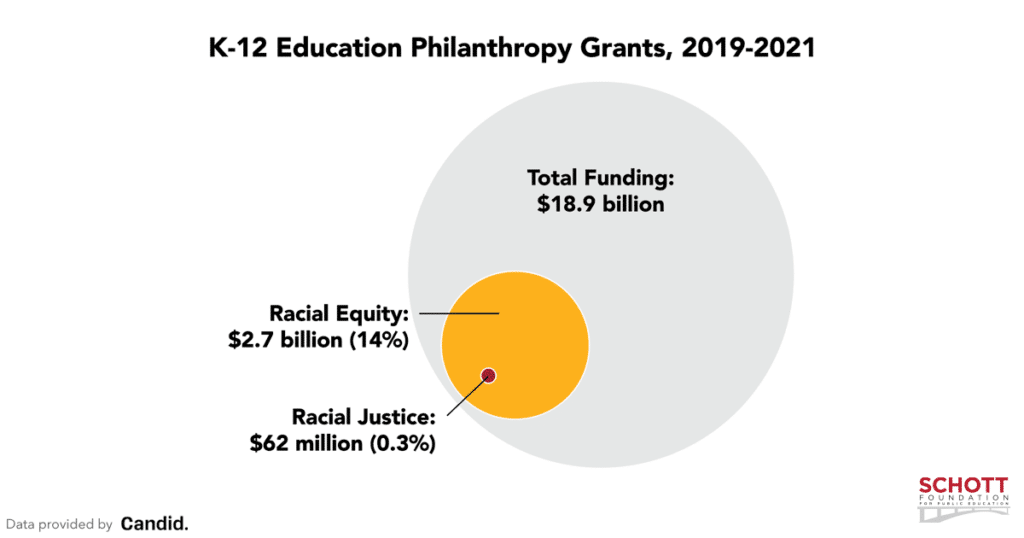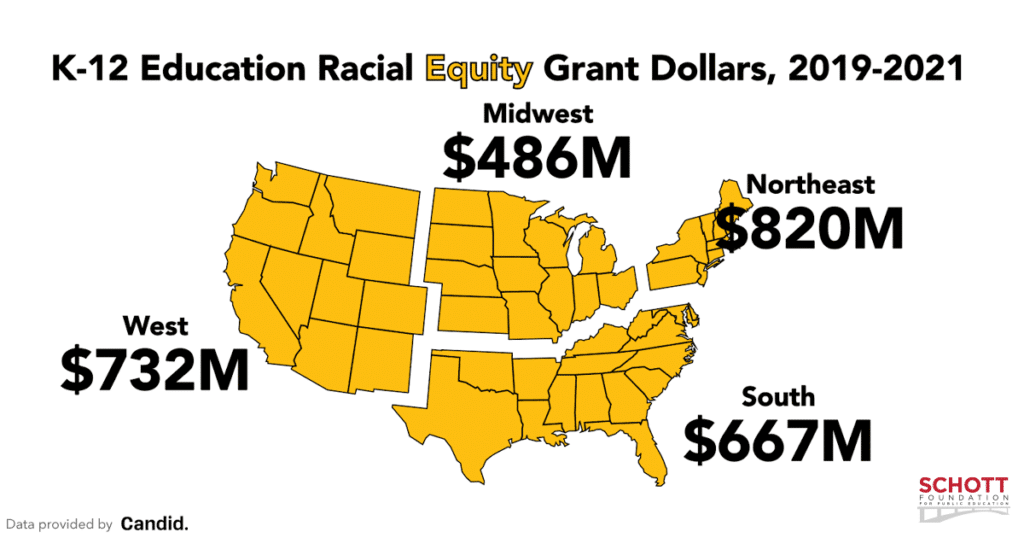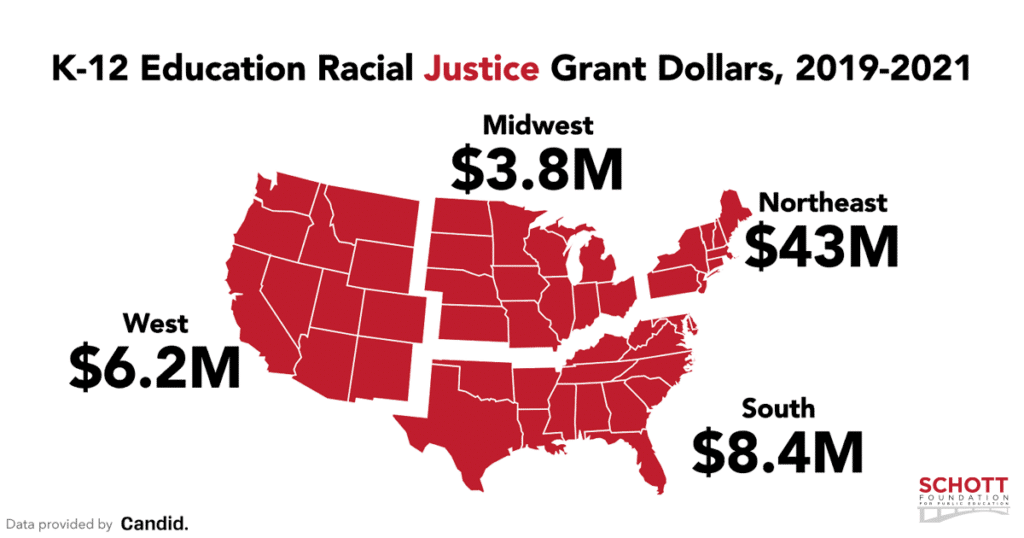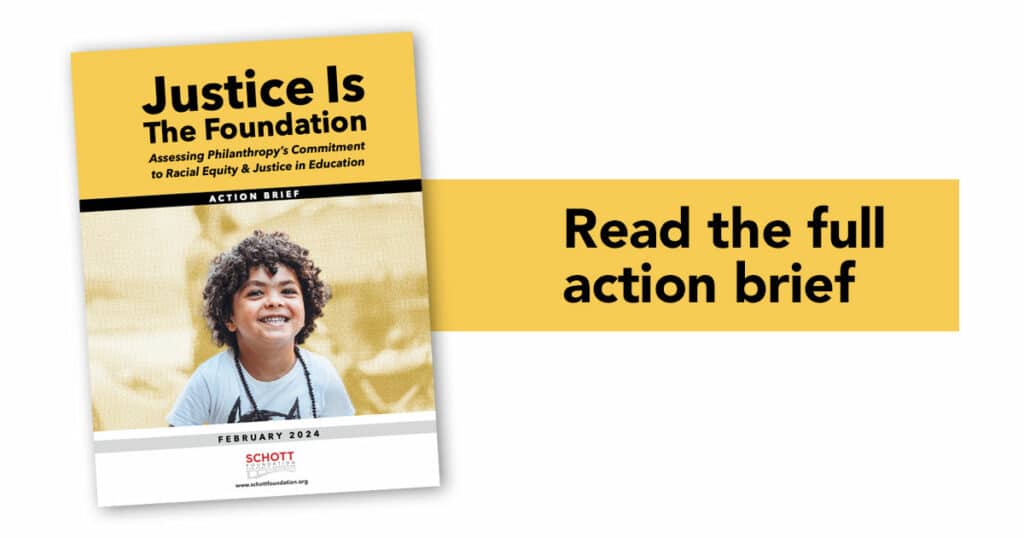Justice Is The Foundation
New Data on Racial Equity and Racial Justice Funding in Education Philanthropy
Movements for racial justice in education are growing — but investment in them is lagging.
The Schott Foundation for Public Education has worked with Candid, a center for nonprofit resources and tools, over the past four years to critically examine K-12 education philanthropy’s grantmaking priorities.
Our project, Justice Is The Foundation, assesses the collective philanthropic impact of giving in the education sector through a lens of racial equity and racial justice. We believe that education philanthropy has an important and irreplaceable role to play in building a more just and equitable society: public schools touch 90% of students in the U.S., are often de facto centers of community and neighborhood cohesion, and have been a focal point of racial justice movements since Reconstruction.
Key Findings
- While public statements show that K-12 education philanthropy understands the need for serious action to tackle structural racism in our schools and across society, funding priorities suggest the opposite.
- Both racial equity and racial justice remain drastically underfunded by the K-12 philanthropic sector. The stubborn refusal of the sector to ramp up investment over the past decade is all the more stark given that U.S. schools are now majority students of color.
- K-12 education philanthropy’s already scant investment in racial justice dropped sharply compared to 2018-2020. The $62 million recorded in 2019-2021—just 0.3% of grantmaking—pales in comparison to the still-meager $105 million (0.7%) in 2018-2020. Given the monumental task of addressing and solving structural racism in our schools and wider society, this funding inadequacy cannot be overstated.
- Geographically, K-12 racial equity and justice grants are not properly flowing where students of color are found. Both sets of grants have recipients disproportionately concentrated in the Northeast, despite the fact that almost half of all K-12 students, and the majority of all students of color, are enrolled in the South.
- It has never been easier—or more urgent—for K-12 funders to step up and make transformative investments in racial equity and justice work. (See the Action Steps section of the brief.)
Grantmaking Totals

Takeaway: Racial equity work is drastically underfunded by K-12 philanthropy, especially for a U.S. school population that is now majority students of color. Investment in racial justice work—the efforts to solve the systemic inequities that racial equity work ameliorates—remains vanishingly small, especially compared to the scope of the challenge.
Racial Equity & Justice Grantmaking By Region
While K-12 racial equity funding is relatively equal across regions, racial justice funding is concentrated in the Northeast. A majority of those dollars, 70 percent, went to organizations based there. Only 14 percent went to grantees located in the South and 10 percent to those in the West. 43 percent of all K-12 public school students of color are enrolled in the South and 29 percent in the West. This disconnect should raise alarm bells for whether funding for both racial justice and equity is going where it is needed most.


Takeaway: Not only is racial equity and racial justice work underinvested by K-12 philanthropy, the grants that are made do not favor the South or West, where most students of color reside.
Download the action brief to get more data, insights, and concrete steps that funders can take:
Join us in shifting philanthropy.
Are you a funder? Partner with Schott to learn how you and the sector can shift resources toward racial equity & justice in education.


